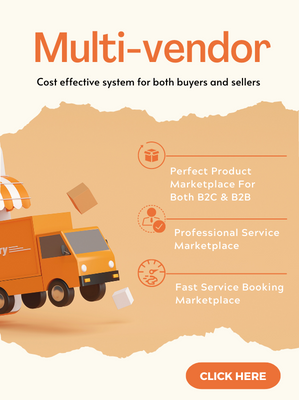Your cart is currently empty!
Marketplace vs dropship: The differences you should explore
Nowadays, it’s quite difficult for newbies to choose the right e-commerce strategies. Today, in our article, we will compare Magento 2 Marketplace vs dropship – two popular ways to build and expand your online business.
Marketplace vs dropship: Introduction
A marketplace is a space for sellers where they find customers. The clearest example is Amazon.com. This strategy suits long-term growth.
Dropshipping was born to optimize the supply chain. You don’t store and don’t ship products directly. Instead of this, you have a list of suppliers.
Comparison: Marketplace vs dropship
Marketplace

Let me give you some famous examples of Marketplace: Magento Marketplace, Amazon, eBay,etc. Instead of dropshipping, this Magento 2 strategy is based on working with other sellers, not suppliers. You don’t need to buy, store, ship, or service products. Your main goal is to create traffic flow and control the sellers. All other tasks rest with vendors.
Pros
- Low costs: You need just to handle marketing and SEO to make your marketplace recognizable. Also, vendors pay you a fee to sell on your website.
- No need to make order fulfillment: Sellers take care of this big part of the job.
- International markets: You can find sellers worldwide and work in international markets.
Cons
- Customer Service: You need to be ready to manage disputes between clients and sellers as a trusted marketplace.
Dropship
Dropshipping is a great way to start your business because it doesn’t require high costs. When you want to sell farm products, but their storage requires special conditions which lead to increased costs. So, to avoid extra expenses, you find some farmers that are ready to ship their product to customers right away from the farm. In your Magento 2 store, you create products, set delivery conditions, and, when a customer creates a new order, you redirect it to your supplier. They take the order and deliver the goods on time. It has advantages and disadvantages, like any other business model. Below is the list of pros and cons.
Pros
- Low starting cost: You don’t need to buy products and rent warehouses. You don’t pay for goods until they are sold. All that you need to start is an optimized website and good suppliers.
- No storing and shipping costs: Without stock, you don’t need to be afraid of being “overstocked” or spoiled products if, say, the electricity goes out. If during delivery the goods are damaged or lost, you won’t have to pay the additional costs.
- Ability to try new markets and expand your business. Dropshipping is international and has no limits. Just make new partnerships with suppliers, and add new products and languages. So you can always try something new, go global, and attract new customers.
Cons
- Stock limits. As you don’t have your own warehouses, it might be that your supplier has no needed items in stock.
- Unscrupulous suppliers. Customer service stays one of your responsibilities. So if your partner has delivered low-quality goods or missed delivery deadlines, you get return requests and bad reviews that take extra costs, and time, and influence customer loyalty.
Solutions

There are two extensions that will help you integrate marketplace or drop shipping in your Magento 2. Let’s see what features they will have.
Dropshipping
Dropshipping for Magento 2 will have the next key functionality:
- Redirect orders to suppliers and notify them about new requests via email automatically;
- Set limited access to the order grid for dropshippers to make work safe;
- Allow your suppliers to manage multiple warehouses and split an order between them;
- Automatically calculate shipping costs according to the nearest warehouse and the cheapest delivery way;
- Let your vendors leave comments on the orders.
Multi-vendor Marketplace
Magento 2 Multi-Vendor Marketplace will include the following features:
- Allow vendors to register on a separate page and automatically approve all registration requests;
- Let sellers create a separate shop page with a custom URL;
- Pass on order management to sellers;
- Track sales statistics and manage vendors on separate dashboards: enable/disable profiles, accept products automatically, etc.;
- Manage commissions by setting a percentage for all sellers or a different percentage for each;
- Let vendors analyze their sales data such as income, balance, orders, and comments.
In conclusion
This is all about the difference between Marketplace vs dropship we want to share with you. We hope this information can be helpful for you when taking part in eCommerce. If you have any questions, you can contact us to have a free consultation. We’ll be ready to support you with our Magento website development service.



